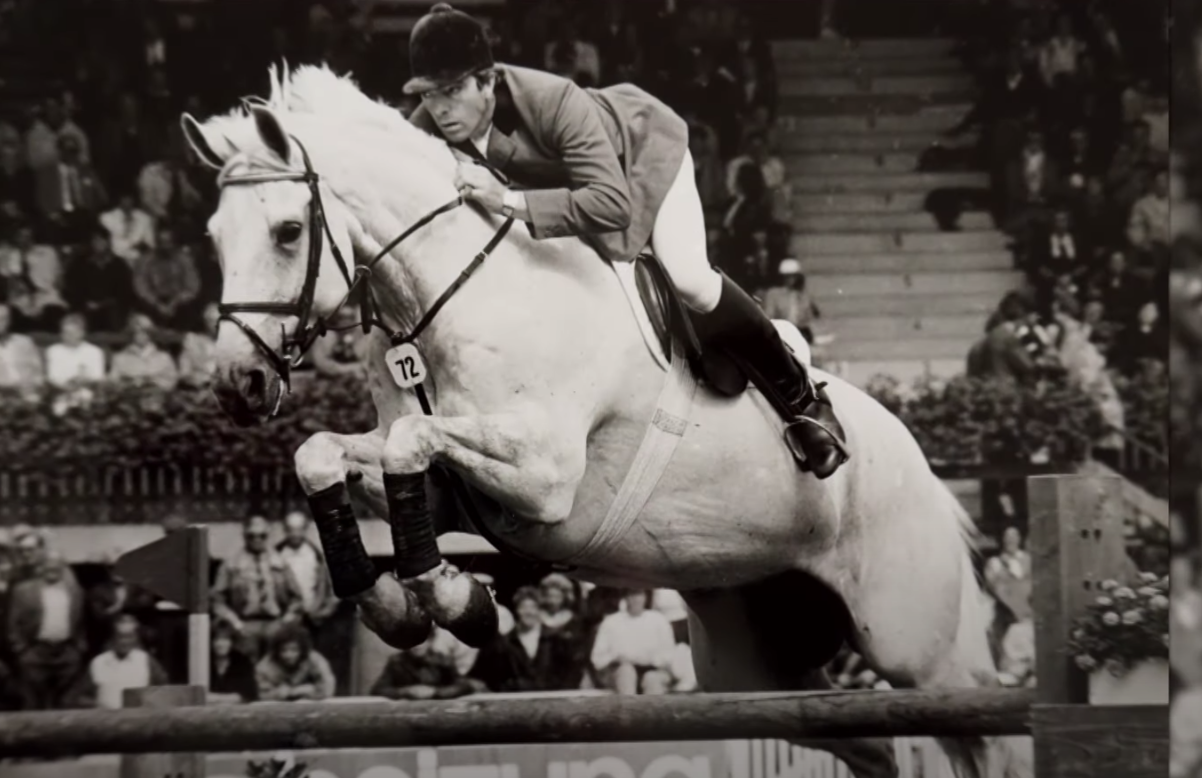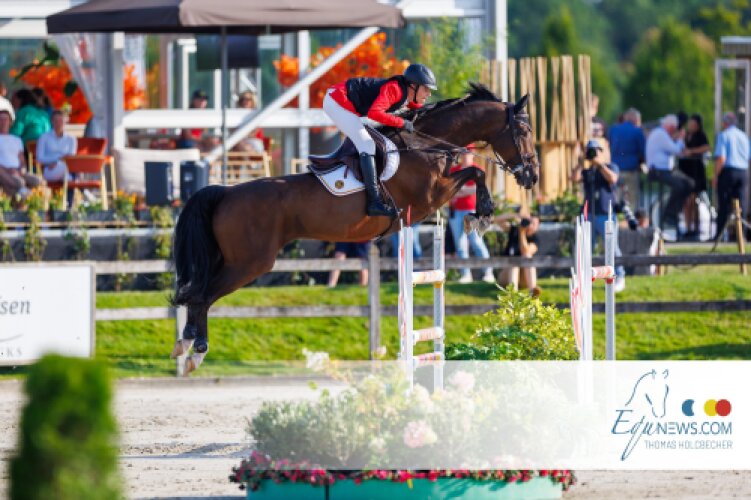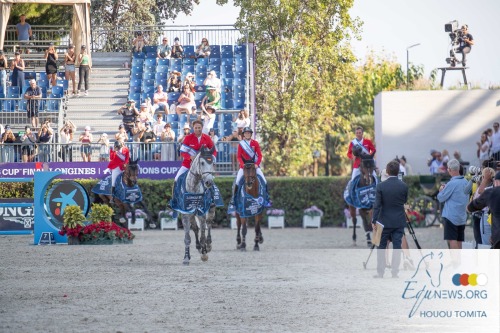Milton (by Marius) is perhaps the most famous show jumper of all time. The white gelding jumped under John Whitaker from one victory to another and was a real crowd pleaser. But how did he reach the highest level and which victories does he have behind his name? A portrait of this legendary horse!
Milton, or Marius Silver Jubilee, which is his full name, began his career under the saddle of Caroline Bradley. The British rider had also ridden Milton's father, Marius. She immediately felt how special Milton was and would even have told her parents that this horse would become her Olympic horse. Unfortunately, it did not come to that. At the age of 37, Bradely suddenly collapsed during an event. Resuscitation attempts were unsuccessful and she died on the spot. From that moment on, the hunt for Milton was on. Not only Bradley but also several other riders had noticed his exceptional qualities. Her parents refused to sell the gelding and gave him to Stephen Hadley, who took over the reins.
His real successes started when John Whitaker took over the reins in 1985 and Milton started jumping at international level. During his sporting career, Milton jumped to several international victories. He was also the first horse to jump over £1 million in prize money, not counting racehorses. Milton was a crowd favorite: he hardly ever touched a fence and often finished a clear round with a buck in the air, as if he knew he had done well.
In 1986 he won the Du Maurier Limited International competition at Spruce Meadows, at that time the competition with the most prize money. In 1987 they jumped to individual silver and team gold at the European Championships in St-Gallen, and two years later they won two gold medals at the European Championships in Rotterdam. In 1990 they won the World Cup final in Dortmund, and in 1991 they repeated this performance in Gothenburg. At the World Equestrian Games in 1990 they jumped to individual silver and team bronze in Stockholm.
He retired in 1994 during a farewell ceremony in Olympia. He died in 1999 and is still buried in the Whitaker family plot.
Milton, or Marius Silver Jubilee, which is his full name, began his career under the saddle of Caroline Bradley. The British rider had also ridden Milton's father, Marius. She immediately felt how special Milton was and would even have told her parents that this horse would become her Olympic horse. Unfortunately, it did not come to that. At the age of 37, Bradely suddenly collapsed during an event. Resuscitation attempts were unsuccessful and she died on the spot. From that moment on, the hunt for Milton was on. Not only Bradley but also several other riders had noticed his exceptional qualities. Her parents refused to sell the gelding and gave him to Stephen Hadley, who took over the reins.
His real successes started when John Whitaker took over the reins in 1985 and Milton started jumping at international level. During his sporting career, Milton jumped to several international victories. He was also the first horse to jump over £1 million in prize money, not counting racehorses. Milton was a crowd favorite: he hardly ever touched a fence and often finished a clear round with a buck in the air, as if he knew he had done well.
In 1986 he won the Du Maurier Limited International competition at Spruce Meadows, at that time the competition with the most prize money. In 1987 they jumped to individual silver and team gold at the European Championships in St-Gallen, and two years later they won two gold medals at the European Championships in Rotterdam. In 1990 they won the World Cup final in Dortmund, and in 1991 they repeated this performance in Gothenburg. At the World Equestrian Games in 1990 they jumped to individual silver and team bronze in Stockholm.
He retired in 1994 during a farewell ceremony in Olympia. He died in 1999 and is still buried in the Whitaker family plot.



